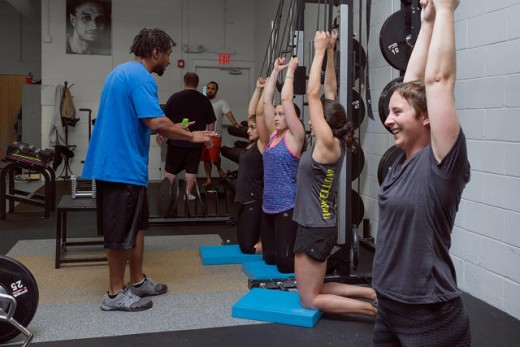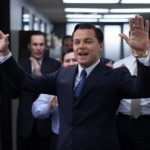The trip From Inmate To Entrepreneur
Is entrepreneurship an answer to the usa’s high recidivism fee? quick firm explores one man’s course from jail to self-sufficiency.
September 30, 2015
Guys like us simply want a chance to work and higher ourselves, however that’s not really easy whilst you’ve served time. Your report is public data; it’s on Google. i have a lot of accomplishments to my name, however the very first thing that people see once they appear me up is my time in prison. You go searching you at individuals who don’t have any hope for a greater lifestyles and it begins to wash off on you.
Angel LaCourt, 28
The Unmarked constructing
in the heart of Kendall sq., the tech hub between Boston and Cambridge, there’s a small unmarked constructing in an place of work park.
it usually is mistaken for the carrier entrance to one of the startups or device companies on the premises. but in the back of the nondescript doorways is a small gym full of tech-business experts working out with former convicts and gang contributors, who are in the process of accomplishing certification as personal trainers. The gym’s obscurity is intentional: It prevents former rival gang participants from losing by way of to complete off an previous vendetta.
On a sunny could afternoon, an organization called InsightSquared is having a bunch workout session for a dozen staff. it is a sea of Lululemon yoga pants and trendy sneakers. digital dance music fills the air, with occasional interludes of Pharrell Williams and Rihanna. The sweaty workforce is difficult at work doing rope training, the use of their higher bodies to swing heavy cords in wavelike motions. They then transfer right into a drill, doing squats, push-ups, and burpees. they’re led by way of younger men shouting out the following activity, helping to appropriate folks’s type, and preserving vitality levels high.
this sort of trainers is Angel LaCourt, a 28-12 months-outdated African American with a soccer participant’s construct, who commutes to the health club every day from his house in Roxbury, a gang-ridden nearby with some of the easiest homicide rates in Boston. He’s been training teams like this for 2 years, ever when you consider that he used to be launched from a 3-and-a-1/2 year stint in federal prison. whereas gaining treasured private training expertise, LaCourt has been forging bonds with clients from the tech group whose lives are worlds except for his.
“now we have relationships with them,” he says. They want to understand how we grew up, the place we’re from. they suspect, ‘you are the related guys we’re reading about in the newspapers and you are in fact excellent guys, just going through completely different cases.'”
the fact that LaCourt has been out of prison for this lengthy makes him an anomaly among former inmates in america. Three quarters of launched prisoners are ultimately recincarcerated, over 1/2 inside their first 12 months of freedom. one among their largest hurdles to reintegrating into society is discovering a technique to generate profits. Employers are hesitant to rent people with criminal data; former convicts are 50% less probably to get callbacks or job offers after an interview, even if they’re neatly certified. with out a source of income, many quickly return to a life of medication and violence.
this is one thing LaCourt knows smartly. He was once first arrested in his late teens. After his unencumber from the state detention center, he discovered it so inconceivable to search out work that he ended up promoting medicine to get by. He was back at the back of bars within a year, this time in a federal facility. lately, he’s working exhausting to keep away from repeating that mistake.
What’s clear to him is that traditional employment channels are adverse to men like him, so his survival depends upon being entrepreneurial enough to create a sound income movement for himself. he’s going to need to intentionally are searching for individuals outdoor his crime-infested local to connect him to occupation opportunities or hire him as a coach.
he’s begun to look new possibilities as he’s frolicked within the Kendall sq. health club, right here in the coronary heart of tech us of a, where innovation and entrepreneurship are upheld as vital social values. nowadays, he has a packed schedule: He works with a full roster of purchasers and uses every spare minute to arrange for his non-public coaching certification from the American college of sports medication. After over a year of intense study, he’ll have the ability to graduate from a student to a bona fide private coach, on the way to permit him to start out making round $100 a session—enough as a way to eventually support his family. “i am counting down the times,” he says.
A course back Into Society
Jon Feinman, a 32-yr-previous who spent his twenties in some of the dangerous neighborhoods in Boston, launched this fitness center software, InnerCity Weightlifting (or ICW), 5 years ago. He hoped to create a spot for younger males with felony data to develop non-public coaching talents so as to in finding first rate-paying work and an inexpensive pathway again into society. for the reason that group opened, it has helped over 250 younger males and presently has 159 enrolled college students.
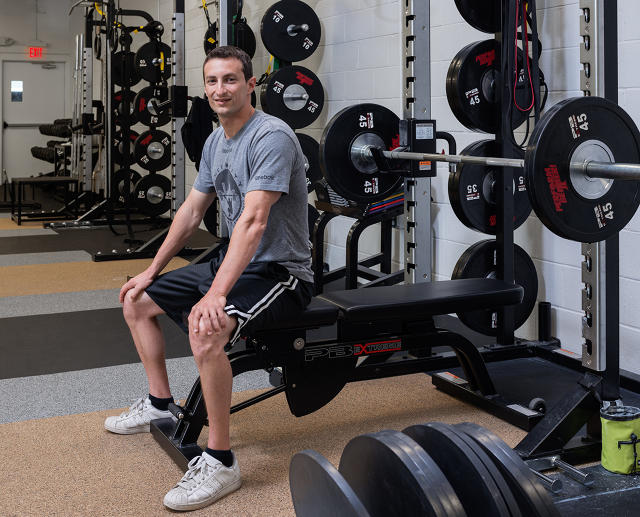
ICW is an intricate scan in bringing folks from completely different socioeconomic backgrounds into each other’s lives on a normal and significant basis. Feinman grew up a few hours out of doors of Boston, in Amherst, Mass., with oldsters who had been psychologists and an older brother, Josh, who now works at ICW as a application director. After school, Feinman become an AmeriCorps show in an East Boston center faculty, the place he noticed what number of young folks grow up in hopeless instances, surrounded by means of poverty, medicine, and violence, with oldsters, cousins, and chums who’ve served time in prison. “They’re going through very actual segregation and isolation,” Feinman tells fast company. “on occasion this happens in very evident ways akin to when folks pass the road to avoid them. however steadily, it happens more subtly, like no longer having the get right of entry to to alternatives that I, for one, took without any consideration rising up.”
almost all the student non-public trainers at ICW come from properties much like those Feinman noticed right through his AmeriCorps years. Most come from households with incomes of not up to $10,000 a year, which is just about 1/2 the federal poverty stage. but in Boston, pockets of poverty aren’t thus far from pockets of wealth; the poorest neighborhoods—Roxbury, Mattapan, and Dorchester—are best about five miles away from Kendall sq., where tech workers continuously make six- and seven-determine salaries.
Feinman still sees a small proportion of his students get rearrested. several had been shot: Feinman has found out that attending students’ funerals is now a tragic, however invariable, a part of his everyday life. “I hate seeing our students get back into trouble,” Feinman says. “but I take these isolated cases as proof that we’re serving the precise inhabitants. we have now a screening course of to make sure we’re concentrated on people within the very best risk class. If they are now not, we refer them elsewhere: there are a lot of different packages available in the market which might be higher than ours at dealing with basic at-risk released prisoners.”
With the lend a hand of donors who believed in his mission, Feinman raised $seventy five,000 in 2010 to set up the primary ICW fitness center in Dorchester, a low-profits part of Boston. via final yr, his fundraising efforts brought in over $1 million, allowing him to open the Kendall sq. place in may just 2015. 4 student trainers and two coaches who supervise came around to help kick-begin training periods in the new gym. Feinman has enlisted native corporations like Microsoft, Deloitte, and a slew of smaller startups to enhance ICW by using encouraging their workers to make use of the gym or through bringing ICW personal trainers to their workplaces to guide personnel workout routines.
Adam von Reyn, InsightSquared’s advertising director and a fitness fanatic, was once overjoyed when he saw industrial fitness center equipment being brought to a space so as regards to his administrative center. someday, he stopped through the development web site that may in the end turn out to be ICW’s Kendall sq. fitness center and struck up a conversation with Feinman. When von Reyn learned about ICW’s mission, he managed to convince his CEO to sponsor staff workouts twice per week as a advantage and a approach to construct morale on the firm.
shoppers who come to this health club pay very lowered rates for his or her personal training classes, on account that their trainers are nonetheless college students in the technique of being licensed. One hour of private training prices $25, considerably lower than the $a hundred to $one hundred fifty you may pay at another gymnasium. Feinman tells me that this cash goes straight away to the coed trainers, who could make as much as $30,000 a yr by means of working with clients. ICW additionally receives donations from corporations like State side road and BNY Mellon, in addition to several foundations, to quilt the organization’s annual running price range of $1.3 million.
a military Of Self-Made Entrepreneurs
The wealth gap in the us is bigger today than any time since the nice depression. Some scholars, like Erik Brynjolfsson, a management professor at MIT’s Sloan school, consider that the technology sector is a first-rate driver of this inequality. “it’s the biggest issue,” he instructed MIT know-how review. He thinks the tech-primarily based financial system favors a small crew to use their talents and make large amounts of cash.
by means of opening a health club in Kendall sq., Feinman is deliberately tapping into the wealth of tech employees. “The Kendall square tech community is full of excessive-internet-worth folks and incessantly, our shoppers turn out becoming our donors,” he says. And he’s discovered that the Boston’s tech neighborhood has been welcoming of ICW and excited about contributing to its work. actually, many people who come to the fitness center say they have been looking for opportunities to give again to their group, but have struggled to make sense of what the most urgent wants are.
this is a high-profile downside for tech philanthropists. Tech entrepreneurs donate considerably greater than people in other industries, representing forty nine% of the $10.2 billion contributed through the 50 greatest donors in 2014. but where they choose to spend that money can and does generate controversy. Take Google, as an instance. the company is legendary for donating billions to charitable reasons, nevertheless it has also been known as out for focusing on issues in developing nations quite than making improvements to the stipulations in its own outdoor, with Bay space residents struggling with housing and transportation issues.
Given how segregated tech workers are from the negative and underserved, they from time to time fail to consider the nuanced and deep-seated issues these communities face. Mark Zuckerberg notably made a $a hundred million donation in 2010 to show around the Newark, N.J., school gadget, one that has failed college students for many years. four years after the donation was once made, the hassle has been largely unsuccessful. When it got here right down to it, critics thought that Zuckerberg’s neatly-meaning plans failed to believe the complicated realities on the bottom and failed to have interaction the neighborhood.
In contrast, Feinman believes that his program is valuable exactly as a result of it is group-primarily based. “What truly motivates me is the speculation of social inclusion,” he says. “i’m enthusiastic about what occurs when folks from Kendall sq. get to know our students and our college students get to know them. Our college students all of sudden turn out to be part of an inclusive network and are unexpectedly put involved with all kinds of new opportunities within the tech world.”
ICW’s philosophy of social inclusion is supported through essentially the most current analysis on lowering recidivism. The Justice center, a nonprofit organization, released a report ultimate year about the most effective methods states have deployed to chop down on reincarceration rates. time and again, states found that bringing former prisoners right into a group that provided supervision and strengthen used to be vital to helping them prevail.
it’s equally vital to help ex-felons to find work if they are to reintegrate into society. Between 60-75% of ex-offenders are unemployed a year after their free up. The nationwide Institute of Justice discovered that most employers are reluctant to rent applicants with felony data, but, researchers discovered that once candidates were in a position to speak directly with the hiring supervisor, their potentialities stronger dramatically. The Institute concluded that personal interplay between applicants and employers was a key think about a success hiring.
Feinman additionally believes that the tech world, with its emphasis on entrepreneurship and meritocracy, is an inspiring model for ex-convicts who are seeking to piece their lives again together. fairly than growing pre-determined occupation tracks for his student personal trainers, he needs them to make use of their abilities and certifications to create their very own direction. Some, like LaCourt, would possibly make a choice to work for themselves as non-public trainers. Others would possibly are seeking employment at different gyms or even come again to serve at ICW. nonetheless others might try to leverage their connections and relationships with purchasers to take a look at to get an entry-level job at an organization or pursue some other profession totally.
Given how onerous it is for convicted felons to find work through traditional channels, Feinman’s technique is to create a military of self-made entrepreneurs. In his view, entrepreneurial resourcefulness is the very best direction forward for convicted felons.

unusual Connections
On a Monday evening, LaCourt holds a gaggle coaching session with three clients. He has developed an individualized hobbies for every of them, and shuttles backward and forward to take a look at on the development of each and every particular person, guiding them through their workouts.
one of the purchasers, Ben, a knowledge scientist in his thirties, is running out of steam trying to full single-leg squats. LaCourt notices him struggling. “My left leg is far weaker than my proper one,” Ben says, grimacing. LaCourt places his hand frivolously on Ben’s shoulder: they’ve been coaching together for a month now and have naturally developed a pleasant familiarity with one another. LaCourt’s method is encouraging. “maintain your arms out,” he says. “and are available right again up when you decrease yourself to the bench.”
The session wraps up. As Ben packs up his issues, he asks LaCourt what he did over the weekend. LaCourt had simply taken his 9-yr-previous son to sleep-away summer time camp. “It used to be his first time at camp closing year and he cried and cried once I dropped him off,” LaCourt says. “I was once like, ‘must I just pressure again house and omit about the entire thing?’ however my boy stayed and toughed it out. at the finish of the week he was so satisfied he did not wish to come house. So this 12 months, he is staying for 2 weeks.”
Feinman has viewed his students forge outstanding connections with shoppers. He’s observed a just lately incarcerated drug seller, still on parole, enjoying a sport of pickup basketball with an MIT professor. He’s watched non-public trainers coated in tattoos marking their gang affiliations asking startup entrepreneurs what it actually means to “construct an app.” Twice per week, he oversees a workforce of ICW personal trainers at Microsoft’s Cambridge headquarters; after the classes, he overhears personal trainers and employees exchanging tales about the foolish issues their children do on the playground.
“people who used to move the road to avoid each different are now crossing the road to claim hi there to each other,” Feinman says. “We’re seeing our pupil non-public trainers make the most of a new network; they’re abruptly seeing prospects for their life they couldn’t even imagine earlier than.”

Angel’s lost Scholarship
Angel LaCourt has a very clear memory of the second when he was shackled and shipped to federal prison. It was his 2nd jail time period: He’d already accomplished two years in a state reformatory. This time, after being picked up for selling medication, he was brought to a retaining facility whereas his sentence used to be processed. In these days, sitting in a cell, all he could take into consideration was once how he used to be going to leave out more formative moments in his son’s existence. His boy used to be 4 on the time. “i wished to be a greater father than the one I had,” LaCourt says. “i wanted to be the greatest father on the planet.”
In federal prison, LaCourt’s days were filled with task. since he had graduated from highschool, he used to be eligible to take some faculty lessons. He had a plumbing certificate, so he did plumbing work and sewed canteen bags for the army through a program called Unicor. He put away around $a hundred a month.
In his free time, LaCourt would carry weights at the gym. during his childhood, he had been a eager athlete, playing basketball and soccer. It was a method to break out some of the troubles at residence. His mother was once hooked on crack cocaine, inflicting her to behave inconsistently, so LaCourt and his sister grew up fending for themselves. When Angel was once 12, LaCourt’s father gained custody of his children, but he supported his family mostly through dealing drugs. In his teens, LaCourt started out selling marijuana himself.
in spite of all this, LaCourt maintained a B+ moderate in school. He fantasized about touchdown a football scholarship and to at some point play in the NFL. quite a lot of children in inside city neighborhoods have the pipe dream of escaping poverty through sports, but LaCourt if truth be told showed promise, catching the eye of his coaches and soccer scouts. “I came beautiful damn just about making it occur,” LaCourt tells me with uncommon vulnerability in his voice. LaCourt bought a slew of soccer scholarships to universities throughout the us of a, together with one to Boston faculty, a faculty identified for its strong tutorial standing and its Division One sports activities groups.
however LaCourt used to be already deeply embedded in the gang scene. in the early 2000s, gang violence and shootings in Roxbury had reached new heights. LaCourt discovered safety in a detailed group of friends in his neighborhood affiliated with H-Block, a Roxbury gang. they had guns and weren’t afraid to use them to give protection to certainly one of their own. in the face of the consistent possibility of violence, LaCourt’s chums supplied loyalty, safety, and moments of kindness. “They were like a household to me,” LaCourt says. “If considered one of us wanted anything else—cash or a journey someplace or whatever—they would do whatever was essential to provide.”
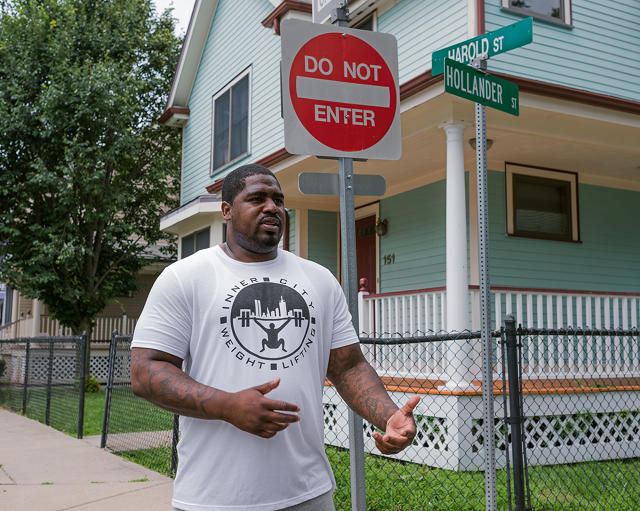
around graduation, LaCourt used to be arrested for taking pictures a person from a rival gang. He misplaced his scholarship to Boston college and spent what would were his first two and a 1/2 years in school in a state jail. proper prior to getting locked up, he fathered a son with a woman from his regional and desperately needed to be part of his newborn youngster’s existence. “on the time, I didn’t really feel dangerous for what I did, as a result of if I hadn’t tried to get the opposite man, he would have shot me first,” he says. “but I be apologetic about all of it now as a result of if I simply had a little bit steering or somebody to inform me, ‘depart that each one that by myself, you’ve gotten a lot more ahead of you,’ i might most definitely be in a different situation nowadays.”
LaCourt left state prison at the age of twenty-two, but found it unattainable to earn money. When a potential service provider Googled his name, his criminal document would pop up sooner than his athletic accomplishments. He did his easiest to avoid gang task, but in a fit of desperation—and an effort to check out to make cash for his son—he started promoting medication again. In lower than a year, he obtained picked up on a federal sentence, touchdown him in a ny penal complex. He was once 26 when he acquired out. “by way of then, I had misplaced just about 5 years of my son’s existence,” LaCourt says.
This time, he wanted to search out in a different way to make money. At a midway house, he heard an ICW representative give a talk concerning the Dorchester fitness center. LaCourt’s first notion used to be that he used to be tired of going to his native YMCA fitness center, which used to be uninteresting and uninspiring, so it could be attention-grabbing to take a look at out every other facility—particularly one that used to be free.
So he showed up at Dorchester in the future and met Feinman whereas he used to be lifting weights. “As I was leaving, Jon said, ‘See you the next day to come!’” LaCourt remembers. “And i assumed, this dude doesn’t even recognize me and he’s telling me I’m going to need to come again day after today.” but LaCourt did come again. That was once two years in the past.
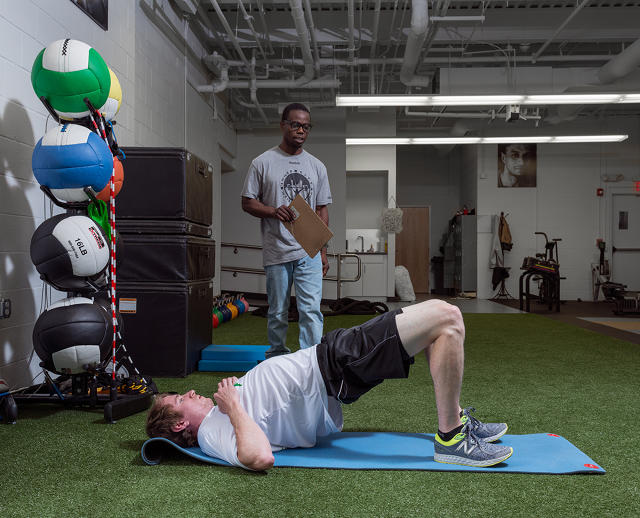
The View At Microsoft
On a vivid Tuesday in June, LaCourt and two different ICW trainers head to their twice-weekly exercise at Microsoft’s R&D headquarters. The sixth flooring has flooring-to-ceiling home windows that boast gorgeous views of the Charles River; sailboats and rowboats go with the flow gently by using. past the water, the complete Boston skyline is seen.
LaCourt started coming right here two years in the past to help with the employee workout routines. during his first consult with, the view actually took his breath away. After the session, he offered a sandwich and sat in one of the lounge chairs overlooking the water.
nowadays, LaCourt is a regular at the Microsoft places of work. The convention-room workout session is overseen by Josh Feinman, ICW’s software director and Jon Feinman’s brother, who has 10 years of private coaching expertise. The ICW trainers have moved apart chairs and set up mats and kettlebells. a bunch of 5 staff arrive; 4 are regulars who’ve shown up twice every week for months.
Aimee Sprung, a civic engagement manager at Microsoft, tells me she first met Jon Feinman when he entered ICW as a project in a nonprofit startup accelerator two and a half of years in the past. Sprung had been interested by tips on how to strengthen the employee health benefits on the Cambridge offices, particularly because the gym services at Microsoft’s headquarters in Redmond, Wash., have been striking by means of comparability. She was the one who recommended bringing ICW trainers to Microsoft, and Feinman loved the speculation.
“in addition to the social good aspect, it’s been a in point of fact great way for employees from different divisions to get to know each different,” Sprung tells me. “Some individuals have viewed lovely outstanding improvements to their fitness degree. And mostly, it’s been good for morale.” The workout periods at Microsoft have grow to be the variation for different on-website coaching packages: Deloitte has recently tapped ICW to convey pupil trainers to their Boston headquarters as a merit.
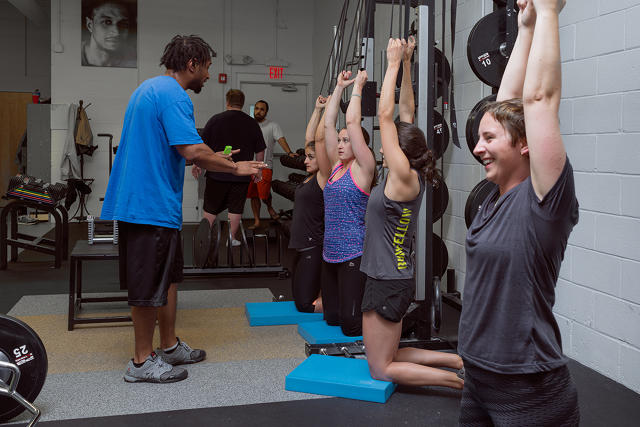
LaCourt is smooth-spoken all over the session and strikes around the room to help shoppers with their kind one-on-one. The day’s routine is on the board: 5 reps of burpees, seven reps of single-leg faucet squats, 10 push-ups, then keep in a plank position for a minute.
Josh Feinman says that studying to be in contact with shoppers is crucial—and daunting—part of the learning. Surrounded by using wealthy workers who’re largely white and Asian, trainers to start with can feel unmoored and unprepared. “after we ask our college students what their greatest fears are, they don’t say prison or guns,” he says. “those are issues they are very familiar with. For a few of them, it’s speaking confidently to their shoppers that scares them.”
For Microsoft’s workers, meanwhile, the periods aren’t only about building greater muscle tissues—in addition they give a boost to the neighborhood’s senses of empathy and social justice, says Sprung. “For those of us who reside and work right here in Kendall sq., it may be arduous to think about what life is like in different elements of town,” she says. “however coming to those periods week after week, you actually get to grasp your trainers and also you learn about what everyday lifestyles is like for them.”
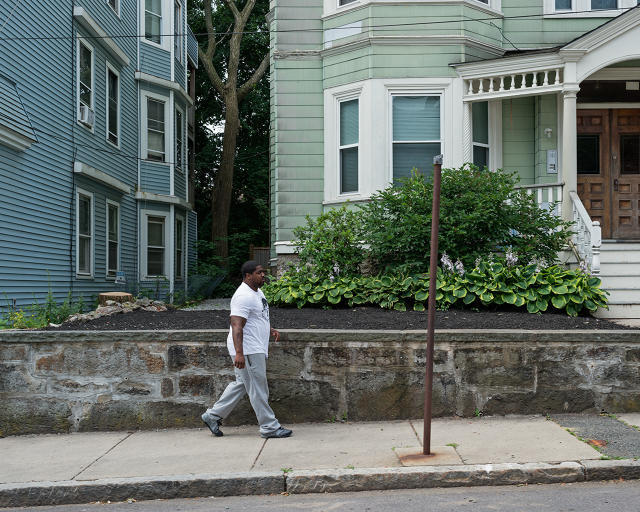
A walk In Roxbury
After the 4th of July weekend, LaCourt offers a tour of his nearby of Roxbury. I pressure across city from my dwelling in Cambridge into the center of Boston, over the Charles River, by using the Boston Symphony Orchestra previous Fenway Park, and the residential neighborhoods are full of housing projects. The deeper into Roxbury you go, the less companies there are on the streets; it’s laborious to identify a single grocery store or financial institution. this is not Starbucks territory.
It’s 10 a.m. and LaCourt and Jon Feinman are on Humboldt Avenue, Roxbury’s major drag. LaCourt looks anxious, distracted by means of every automobile that passes, moderately glancing at every driver. power-by means of shootings, at any time all the way through the day or night, are a regular occurrence.
LaCourt is willing to take us down the better streets in his neighborhood, however thinks we must keep away from aspect streets. Over the previous couple of days, there had been flare-americabetween rival gangs in these components, with more than one reviews of homicides.
Humboldt Avenue intersects with Hutchings, abode, Howland, and Harrishof. Parallel to Humboldt is Harold street, which intersects with Hollander and Holworthy. this is why that the dominant gang right here is referred to as H-Block; it’s been at warfare with the well being street Gang from nearby Jamaica plain because the Nineteen Eighties. over the past 4 many years, a whole bunch of individuals have been killed: most had been affiliated with gangs, but many were harmless bystanders caught within the crossfire. remaining yr, there have been 213 shootings in Boston, principally focused within the gang-held areas of Dorchester, Mattapan, and Roxbury.
“a lot of my friends never made it prior 18 or 21,” LaCourt says. He points to at least one street nook and then every other and one more after that, the place close pals of his have died. “I’m 28 and that makes me outdated, in these parts. I’ve outlived so many people.” We pause at a makeshift memorial connected to a boulevard signal. “I sometimes come right here and have a drink to my buddy, remembering the great instances we had,” LaCourt says. “His daughter is eight years previous now. She didn’t get to spend a lot time together with her father.”
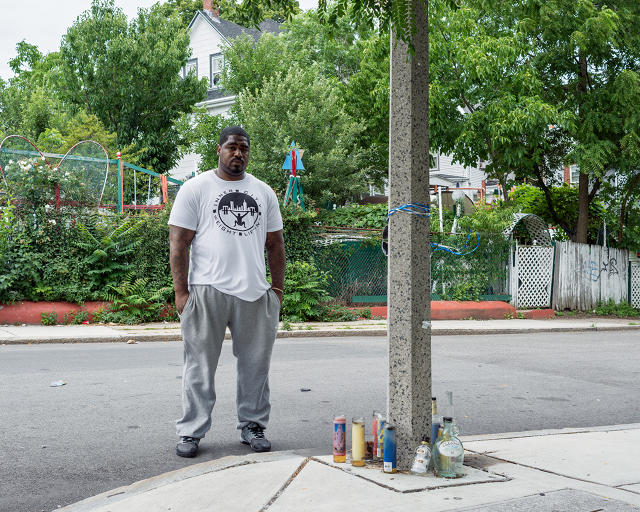
LaCourt’s grandparents uprooted from Puerto Rico virtually a century in the past. They quick found their strategy to Boston, the place their prolonged domestic had already begun to settle in Roxbury. From the Nineteen Forties onward, the black population in Boston grew exponentially as communities commenced emigrate from the South, but on account of redlining and blockbusting practices, many lived in racially segregated neighborhoods like Roxbury and Dorchester that suffered from an absence of metropolis services and products like proper trash disposal and public bus routes.
until LaCourt was well into his teens, he never left the 24-block radius of Roxbury. He had by no means viewed the landmarks that people associate with Boston: the Charles River, Faneuil hall, Harvard and MIT, the Italian eating places in the North end. There was once no solution to go away his nearby and not using a car. only one bus route connects upper Roxbury to downtown Boston and on account of gang violence, accidentally getting on a bus with the fallacious particular person could get you shot. a few friends of LaCourt’s had been gunned down as they tried to leave the bus. “One reason to join a gang was once simply transportation,” he explains. “You had a protected technique to get around.”
whereas Feinman has closely observed the devastation that gang violence has brought on particular person lives and households of the young males who come to ICW, he also knows the reason for the gangs. “they are making decisions I don’t believe, however these decisions are rooted within the good judgment of their situations,” Feinman says. “These gangs are according to love and strengthen for one another that no person else is really prepared to show them. people think that our non-public training college students don’t care about anything, which makes them straightforward to write off. but, in fact, they care a lot about defending what little they’ve and standing up for one any other in the one way they understand how that they’re keen to lose their life to a bullet or detention center.”
As our tour comes to an finish, LaCourt is requested if he plans on leaving Roxbury. “after all,” he says. “but cash is always a topic.” He’s doggedly working to get his non-public coaching certification, so that he can start to earn between $a hundred and $one hundred fifty an hour for training shoppers.
simplest five months into its existence, ICW’s Kendall sq. region had a full roster of shoppers and extra signing up by the week. Feinman’s starting to consider the group’s subsequent transfer. He’d wish to set up every other place in Boston, in all probability on Tremont street, an extended road running between probably the most expensive downtown neighborhoods, filled with boutiques and chic eating places, and the initiatives of Roxbury. Feinman is sure that the ICW version will work in different components of the united states where extreme poverty and terrific wealth are inside strolling distance of one another. he is starting to devise for brand spanking new ICW places in Chicago, l. a., and Philadelphia.
LaCourt, for one, says he’d be desirous to help expand operations after they transfer out of doors of Boston. “i might love to start over somewhere new, where nobody is aware of me,” he says. “a place the place I could convey my son to the park and no longer have to look at my back.”
(161)

